Moke Coffee Blends
Our director has been working for large coffee brand for several years, nurturing, advising, and supervising the production of each batch and blend. We know the standards of high-quality coffee in the eyes of anyone, from the SCAA to the grateful taster (which very much includes us), and the details of the trade, from tracing its flow to ensuring its fairness throughout all stages of the supply chain.
Our Expertise

Our Ranges
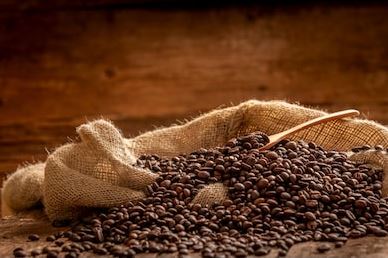
We work with and deliver coffee from all ranges and altitudes, including Colombia, Brazil, and Ethiopia. Using our quantitative and intuitive knowledge of each typical coffee profile (body, acidity, undertones, you name it), we curate the coffee we make under established house names, and create inspired blends for any time of day and combination of tastes, plenty of information for which you’ll find below. Watch this space for something new!
The very name of the brand, and of its director, honours this blend and for good reason. The finer traits of the coffee lie in the Ethiopian Arabica beans we use. Arabica beans are naturally sweet, yield a better oil release, and have to be farmed with care; and that’s what we do. But for the bitter aftertaste and caffeine kick? Robusta. The mix here, and the delicate balance we nurture, is between a distinctively flavourful and bright set of Arabica beans and a dense, well-caffeinated set of Robusta beans with their boldness of body. In a good brew, too, you can expect that the Arabica beans will capture all the coffee’s fine aromatics in the crema of the cup.
Espresso

Yirga
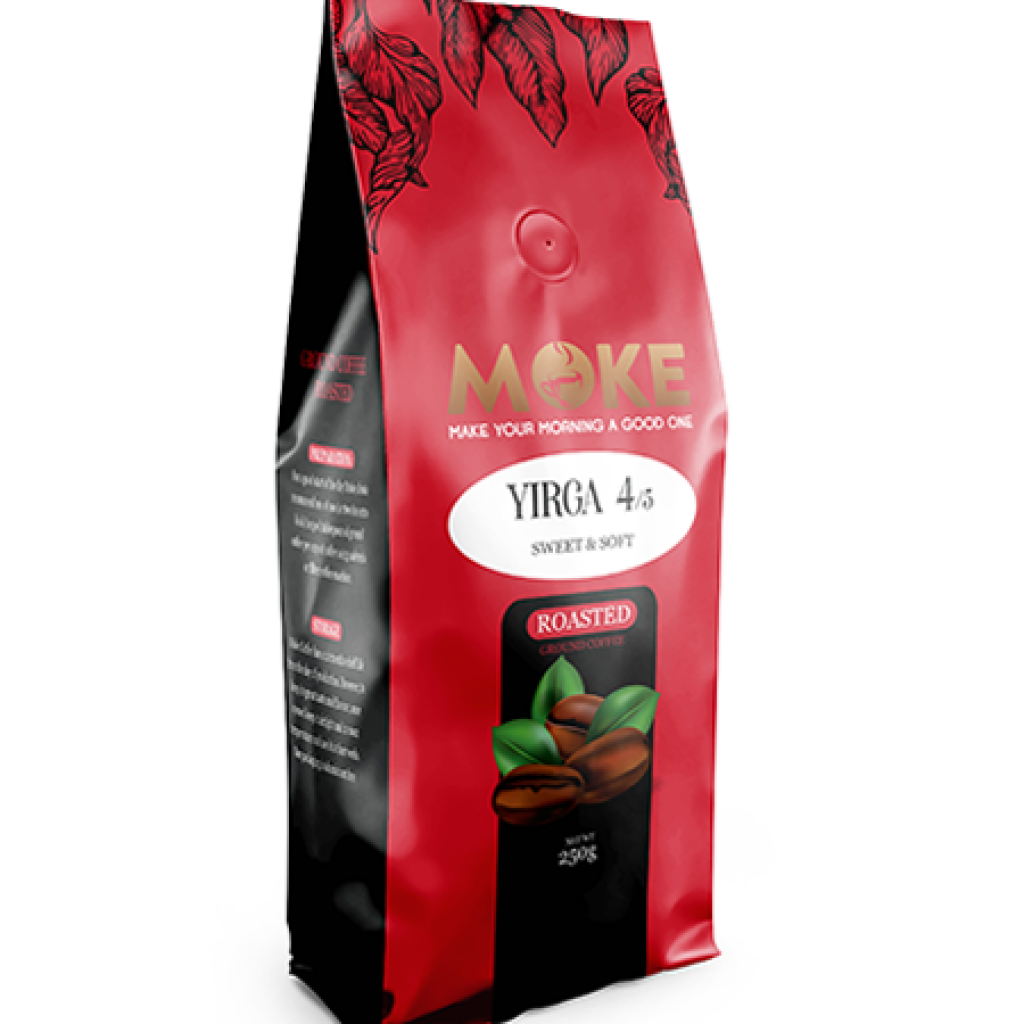
Coffee from the Yirgacheffe region is known for many things. First, for its mountainous cultivation; Yirgacheffe’s growing altitudes range from 1,700-2,200 metres above sea level, and as you go upwards, the air pressure lessens. This is perfect for preserving flavours, as oxygen stales coffee, so we rely less on chemicals like nitrogen for packaging (and so your bag will be fuller than you might expect!). Second, its thorough roasting process: immersion in water, soaking, and leaving the naked beans to dry so heavier flavours are washed off. This blend promises an equally clean flavour and light body, with crisp hints of floral and citrus as well as a clear consistency in quality from a land cultivated for coffee, for centuries.
Huila, this coffee’s place of origin, and its beans are truly distinguished. In the last years, it’s been developed with the help of the FNC and local committees – an effort we aspire to – and as of December 2015, high-quality coffee makes around 35% of the Huila department’s total production output. Café del Huila was given Denomination of Origin status in 2013, a title given to foods and drinks with unique, location-specific qualities. After a collection of over 1,900 samples, a taste profile was assigned: among other things, ‘high acidity, medium body, overall balanced impression’ and a ‘clean cup, sweet with certain soft and floral notes’. This blend promises no less than this, with the very same care that went into defining the taste of this blend’s beans going into its roasting.
Exelos
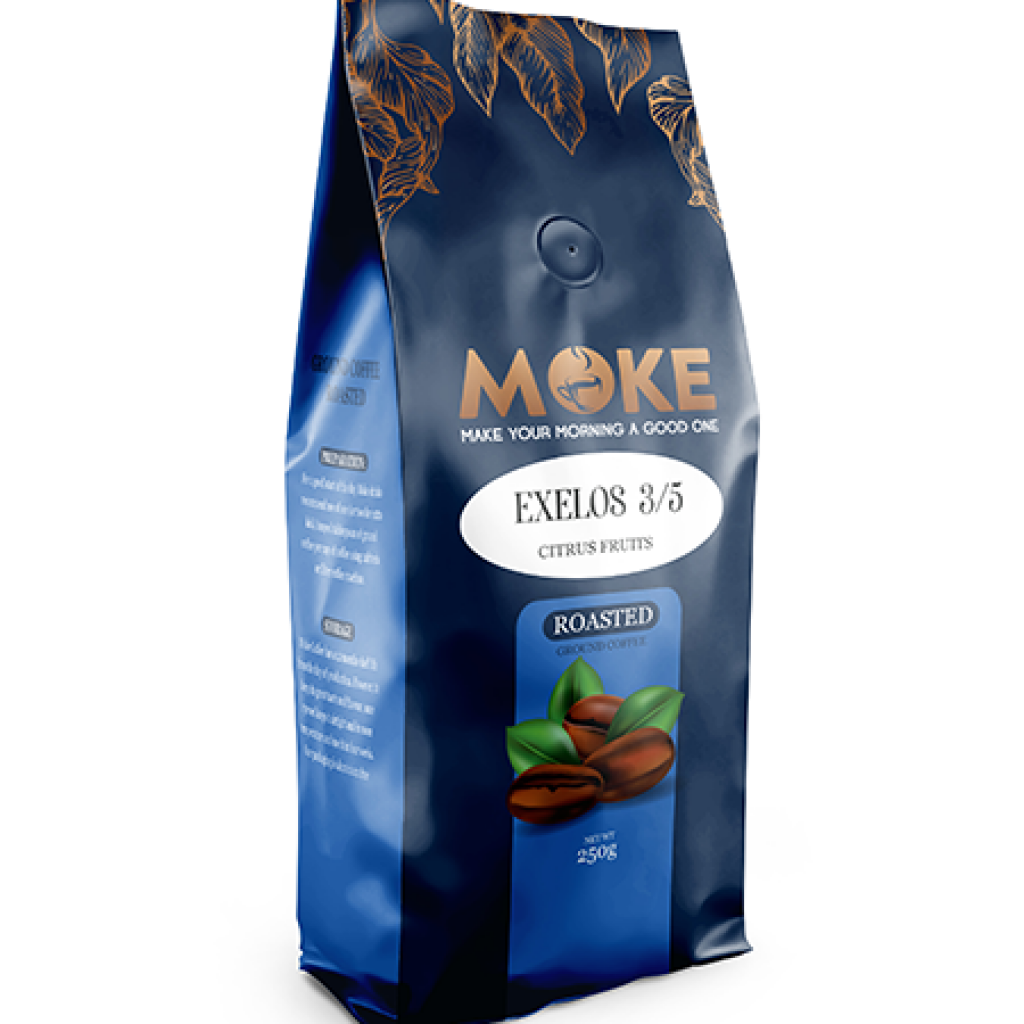
Harrar
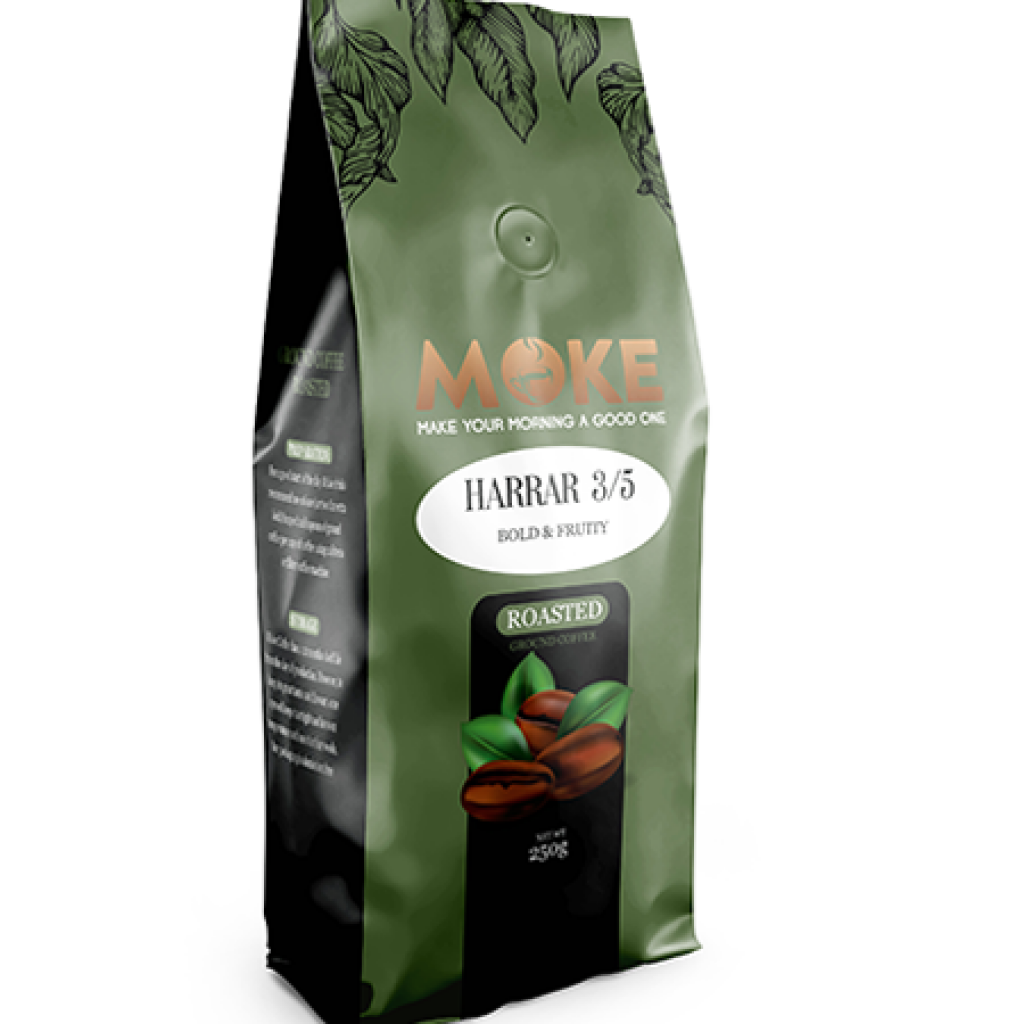
In the best of Harrar coffees, it’s said you can find a strong aroma of blueberries and blackberries – and with this blend in your hands, you may no longer have to seek such a special smell. As well as fruit notes like these, this blend has a remarkable floral taste and hints of jasmine, from the small farms in the eastern parts of Ethiopia that grow it. The beans are usually dry processed – laid out in the sun in layers to dry naturally – and skilfully sorted, almost all by hand. If you use these beans to make espresso, you can easily achieve a foamy crema; the mark of a well-rounded shot.
San Marcos is well-known for being the warmest of Guatemala’s coffee-growing regions, and one with high levels of rainfall. Thanks to this climate, the coffee plant’s flowers can blossom early here. The soil, meanwhile, is supplied and thoroughly enriched by two nearby volcanoes (Santa María and Volcán de Atitlán – two of the highest in Central America), with elements like phosphorus and calcium which contribute to the soil’s fertility and help its coffee plants thrive easily. All these are what gives the coffee its distinctive cup quality – floral tones, sparkling acidity and balanced body.
San Marcos
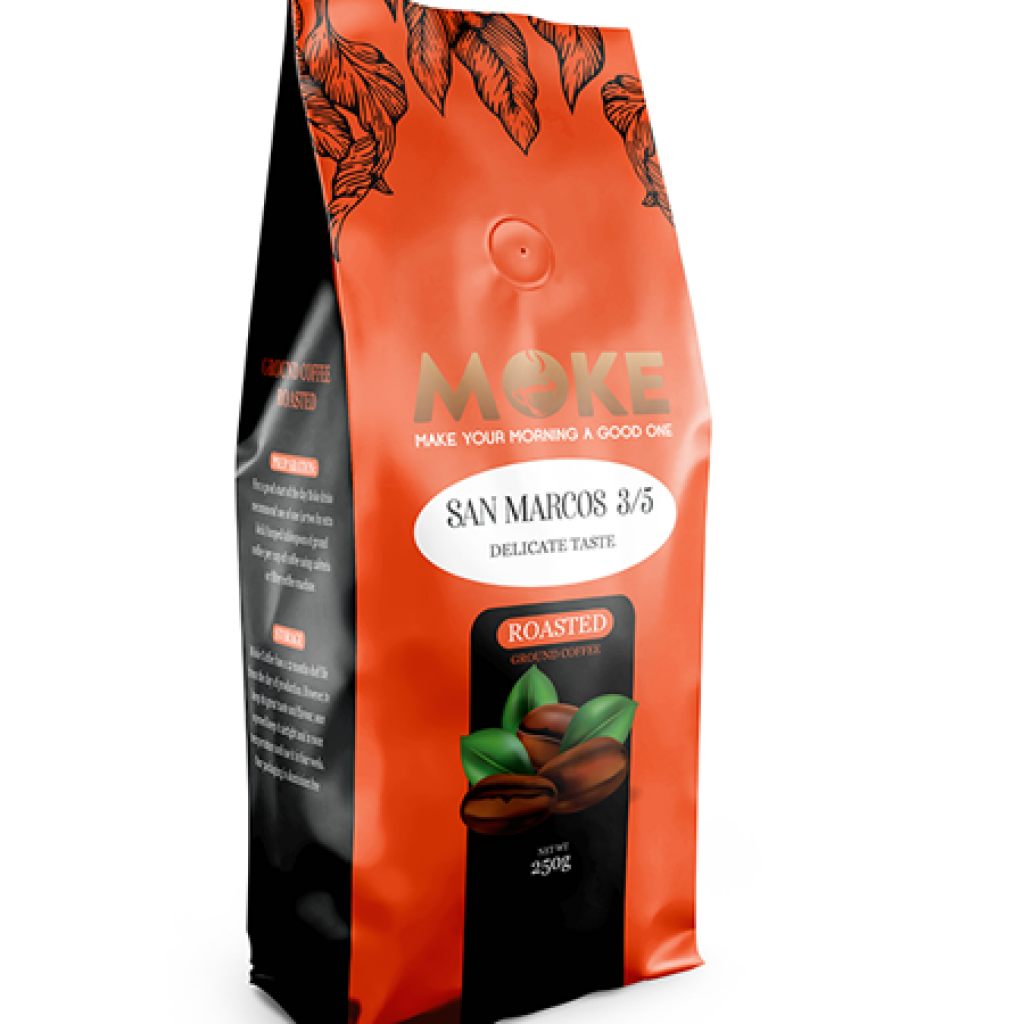
Arabmocha
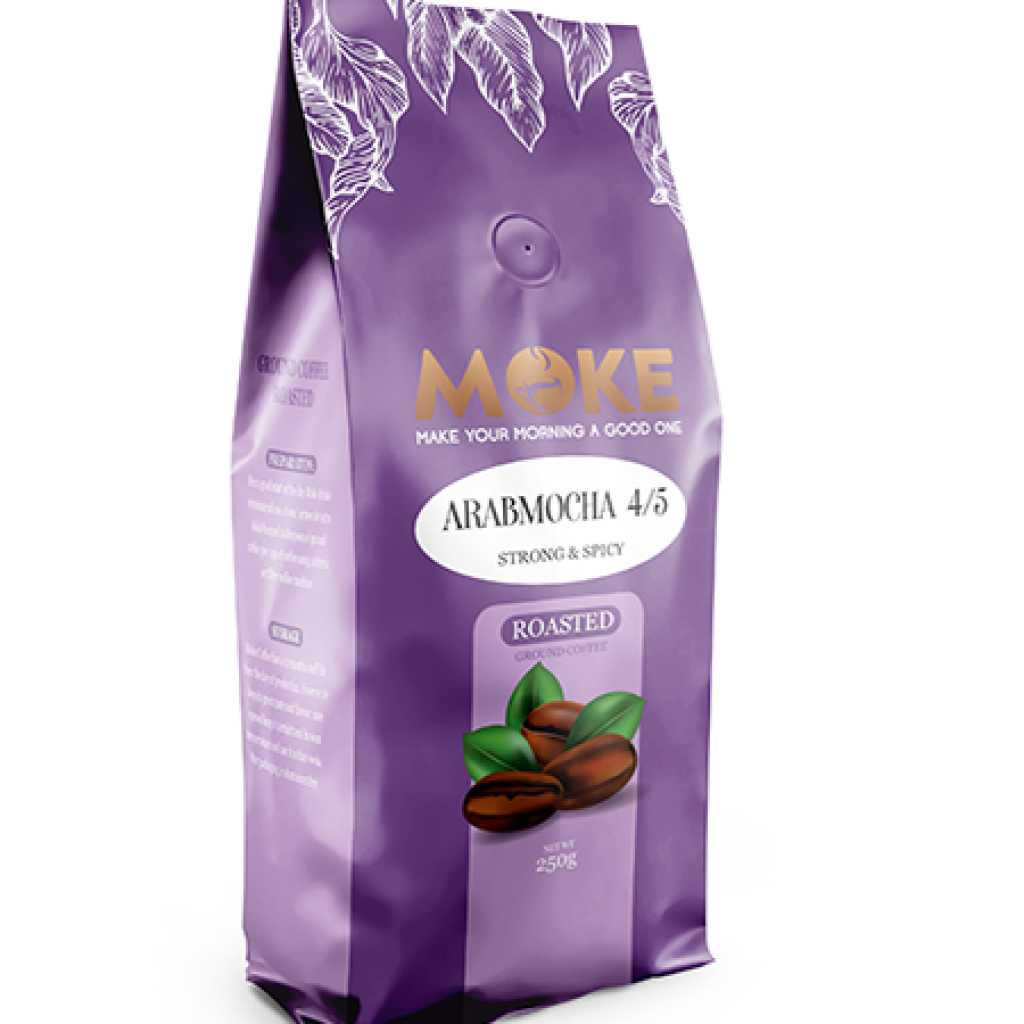
The coffee known as Arabian Mocha, or Arabmocha for short (and under us), may well be one of the most famous coffees in the world. The second part of the name is taken from the Yemeni port city Mocha (locally known as al-Makha), a – in fact, the – major marketplace of coffee from the 15th century to the start of the 19th. This blend honours the legacy of its namesake; the earthy, chocolatey flavour of a crop grown without chemicals, and the cinnamon taste of beans that, in a truly unique process, do not have their fruit removed while drying. And from a region where almost every farmer has a coffee nursery in their home, you can expect the highest level of familiarity and care from us in handling, roasting and blending worldwide-prized beans like these.
